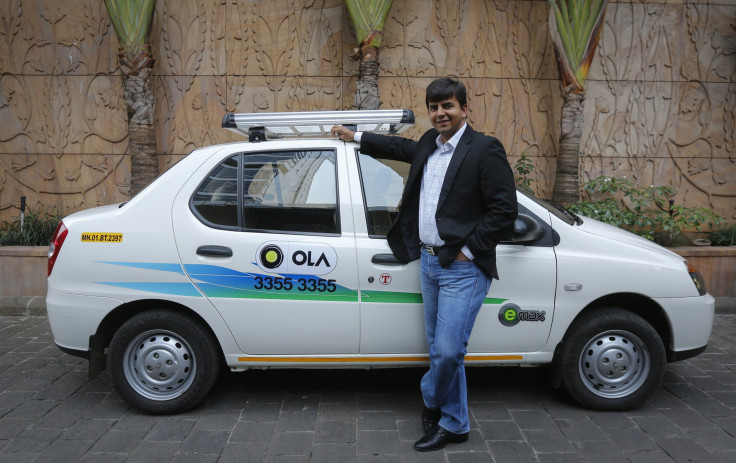India Moves A Step Closer To Homogeneous Rules On Ride-Hailing Services Such As Ola And Uber

BANGALORE, India -- India's federal government has issued an extensive set of guidelines that go a long way toward recognizing ride-hailing service providers operating in the country as a separate business model. The major players include Uber Technologies Inc. and its larger competitor ANI Technologies Pvt. Ltd, which operates Ola Cabs.
Among the guidelines is a requirement that cars in the ride-hailing networks be equipped with tracking devices and emergency buttons. Stringent police verification of prospective drivers would be required and the drivers will also need to hold bank accounts with valid "know-your-customer" forms that meet the regulations of India's central bank, the Reserve Bank of India. International Business Times has viewed a copy of the guidelines are not public yet.
"This is a big leap towards recognizing sector specific regulations for technology based ride-hailing services in India and we look forward to working with the various state governments on reasonable licensing schemes in the spirit of the central guidelines," Uber said, in a statement to IBT, while Ola called the guidelines "progressive."
Drivers will also need to provide proof of address and the contact details of at least two family members. Persons with prior criminal convictions will be barred from joining the ride-hailing networks, which, for their part, are expected to have 24x7 call centers monitoring the cabs on their networks.
Demand for ride-hailing services is on the rise in India, the world's third-largest smartphone market. Uber has committed to spending $1 billion in India, where it is also building a state-of-the-art operations center, to capture one of its fastest growing and biggest markets outside the U.S.
Ola Cabs, the market leader in India, is funded by multinational giants, including SoftBank Group Corp. Ola is also about to close a funding round of over $500 million, which will value the Bangalore company at $5 billion.
The guidelines, issued Thursday by India's ministry of road transport and highways, are "non-binding" and each of the country's federal states can adopt them or use them as the basis for their own policies, Jaspal Singh, a partner with Valoriser Consultants, a New Delhi-based consultancy in the transport sector, told International Business Times.
"The guidelines are positive for the sector, because they recognize the cab aggregators as a marketplace, and they are giving a lot of freedom to them to operate in the market," Singh said. Earlier rules such as those that govern traditional radio taxis were put in place decades ago.
The guidelines also include rules on working conditions for drivers as well as the fitness of vehicles. An important guideline, with respect to financing of cars, which both Ola Cabs and Uber are facilitating in India, as they compete for drivers, is that a ride-hailing operator can't compel a driver to exclusively work on its own network even if it has financed the cab.
Currently, nearly 50 percent of the drivers on ride-hailing networks in India could be working for more than one operator, Singh said.
The latest guidelines "recognize the new environment," Singh added. Although India's rules recognize transport as a provincial "state matter," the federal government's guidelines can potentially form the basis for a degree of homogeneity among different state policies on ride-hailing services, he said.
© Copyright IBTimes 2024. All rights reserved.






















